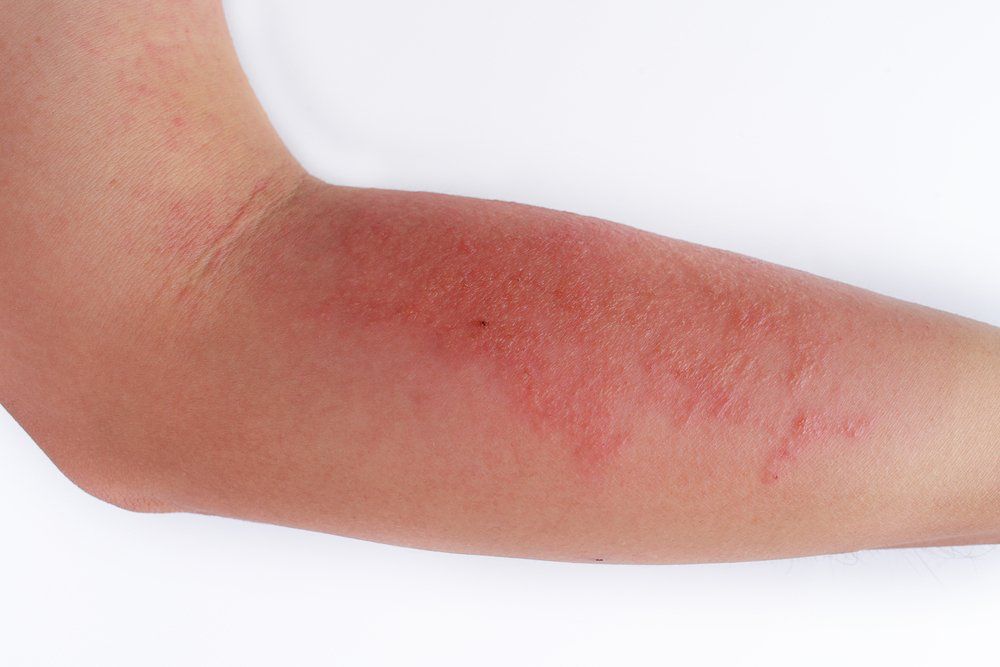- Case-Based Roundtable
- General Dermatology
- Eczema
- Chronic Hand Eczema
- Alopecia
- Aesthetics
- Vitiligo
- COVID-19
- Actinic Keratosis
- Precision Medicine and Biologics
- Rare Disease
- Wound Care
- Rosacea
- Psoriasis
- Psoriatic Arthritis
- Atopic Dermatitis
- Melasma
- NP and PA
- Skin Cancer
- Hidradenitis Suppurativa
- Drug Watch
- Pigmentary Disorders
- Acne
- Pediatric Dermatology
- Practice Management
- Prurigo Nodularis
- Buy-and-Bill
Publication
Article
Dermatology Times
Disease burden high for adolescents with atopic dermatitis
Author(s):
Several new studies indicate that disease burden may be higher in adolescents than in adults with atopic dermatitis, and that adolescents with moderate-to-severe disease may face an even greater unmet therapeutic need.

Dr. Silverberg

A series of new studies reveals a higher European prevalence of atopic dermatitis (AD) than that reported in the United States, and a hefty burden including lost school and workdays for patients and parents. Because AD burden was found to be higher in adolescents than in adults, researchers add, adolescents with moderate-to-severe disease may face an even greater unmet therapeutic need.
RELATED: Advances in pediatric eczema treatment
Over the years, studies have examined patient-reported AD burden either in clinical cohorts that may not be generalizable, or population-based cohorts in children or adults, says Jonathan Silverberg, M.D., Ph.D., MPH, director of clinical research, director of patch testing and an associate professor of dermatology at The George Washington University School of Medicine and Health Sciences.
"A group that has not been studied well to date has been the adolescent population. There's been a substantial amount of epidemiology work done in the adolescent age group from the ISAAC study, ages 13 to 14 years. Aside from that, we don't have great data on burden of disease in older children and adolescents,” he says. “In addition, most studies of AD in childhood and adolescence used disparate methodology, which precludes the ability to compare results with studies of adult AD."
The 1377-patient Epidemiology of Children with Atopic Dermatitis Reporting on Their Experience (EPI-CARE) study is part of a large multinational study that examined AD across the entire life course. Between September 2018 and February 2019, investigators conducted a web-based survey of adolescents aged 12 to 17 years with AD in the United States, France, Germany, Italy, Spain and the UK. Average respondent age was 15 years, with a roughly even proportion of males and females at varying degrees of disease severity.
RELATED: FDA grants priority review for dupilumab in pediatric atopic dermatitis
In one poster,1 Silverberg et al. reported a European AD prevalence of 14.7%, versus 9.3% in the United States. European prevalence rates ranged from 8.7% in Germany to 19.8% in Spain. Regional differences regarding climate and genetics may account for the higher overall prevalence in Europe, says Dr. Silverberg.
"Part of it may also be related to the definition used in this study," he adds. To reduce the risk of potential misclassification, researchers combined self- or caregiver reporting of a doctor's diagnosis of eczema or skin allergy with the extensively validated ISAAC criteria for AD.
RELATED: Atopic dermatitis in teens with skin of color
"Atopic dermatitis impacts all aspects of adolescent health," says Dr. Silverberg. According to a separate poster,2 increasing disease severity correlated with increasing mean scores for itch, sleep, skin pain (all captured via a 0-10 numerical rating scale/NRS) and health-related quality-of-life (HRQOL).
The centrality of itch in AD has long been recognized, says Dr. Silverberg. "But we saw similar patterns for the intensity of sleep disturbances where patients with severe AD had NRS sleep of 7.1, which is considered to be severe sleep disturbance."
EPI-CARE is one of the first studies to examine skin pain in the adolescent population, Dr. Silverberg adds. NRS scores for skin pain in patients with severe, moderate and mild AD were 7.5, 5.3 and 2.9, respectively (P<0.01 in all analyses).
"The real take-home comes down to the impact on quality of life. The more severe the atopic dermatitis, the more likely patients were to have substantial impact across all the different items and subdomains of the Children's Dermatology Life Quality Index (CDLQI)," says Dr. Silverberg. Similarly, the proportions of respondents in the severe, moderate and mild categories who reported having at least one atopic comorbidity were 81%, 68.6% and 64.3%, respectively.
RELATED: New resource for teens with atopic dermatitis
"In addition, there is a substantial impact on productivity for adolescents," he notes.
Average number of school days missed annually ranged from 10.9 (severe AD) to 3.4 (mild AD; P<0.01). Likewise, 87% of caregivers of an adolescent with severe AD reported missing at least one workday in the past four weeks, versus 66.3% for moderate AD and 44.8% for mild AD.
"When comparing the results from the study with previously published data in adults,3" writes Weidinger et al., "the disease burden associated with AD appears to be higher in adolescents than in adults, implying that there is an even greater unmet therapeutic need in the management of adolescents with moderate-to-severe AD."
RELATED: Atopic dermatitis and the atopic march
These results emphasize that the adolescent population would potentially benefit from tighter disease control, and potentially stepping up therapy, Dr. Silverberg says.
"The pediatric population has often been neglected from a therapeutic standpoint because pediatricians and pediatric dermatologists are often a little more hesitant about using some of the oral systemic immunosuppressants because of their toxicity and side-effect profile,” he says, “We are starting to see the development of newer, potentially more potent and safer therapeutics for the pediatric population. The growing recognition of the burden of AD in adolescents and hopefully better treatment options will allow for this patient population to be treated more appropriately and ultimately to achieve better long-term control of their disease."
Disclosures:
Dr. Silverberg has received honoraria as a speaker/consultant for Galderma, Abbvie, AnaptysBio, Asana BioSciences, Arena, Boehringer-Ingelheim, Dermavant, Eli Lilly, GlaxoSmithKline, Glenmark, Kiniksa, Leo, Menlo, Novartis, Pfizer, and Regeneron-Sanofi and has received grants as an investigator from Galderma and GlaxoSmithKline.
References:
1. Silverberg JI, Barbarot S, Simpson EL, et al. Epidemiology of atopic dermatitis in the adolescent population: a cross-sectional study in the United States and Europe. Poster P1458. European Academy of Dermatology and Venereology Congress; October 9-13, 2019. Madrid, Spain.
2. Weidinger S, Simpson EL, Silverberg JI, et al. The patient-reported disease burden in adolescents with atopic dermatitis: a cross-sectional study in the United States and Europe. Poster P1459. European Academy of Dermatology and Venereology Congress; October 9-13, 2019. Madrid, Spain.
3. Girolomoni G, Gadkari A, Auziere S, et al. Characterizing the patient-reported disease burden in adults with atopic dermatitis: a cross-sectional study from clinical practices in Europe and Canada. Poster P0253. European Academy of Dermatology and Venereology Congress; September 12-16, 2018. Paris, France.







